Are you ready to take a peek into the not-so-common world of monogamous mammals? 🌍 Yeah, you heard that right – not all animals are into the whole ‘playing the field’ scene. Some actually prefer sticking with one partner.
🐾 From gibbons who sing to their loves in the treetops to beavers working side by side on their dams, we’re about to explore eight mammal species that show us how nature does commitment. So, let’s jump right in and discover the unexpected and fascinating love lives of these unique creatures!
Key Summary
| Animal | Fun Fact | Statistic |
|---|---|---|
| Gibbons | Can swing through trees at speeds up to 35 mph. | About 20 different species; can live up to 25-30 years in the wild. |
| Beavers | Their dams can be up to 1,500 feet long. | Teeth never stop growing. |
| Wolves | Have a ‘nanny’ system for pup care. | Pack size ranges from 6 to over 30 members. |
| Prairie Voles | Used in studies for human-like brain chemistry in bonding. | Can have up to 5-10 offspring per litter, several litters per year. |
| Kirk’s Dik-Dik | Mark territory with secretions from glands near their eyes. | Measure 14-18 inches at the shoulder; weigh 7-16 pounds. |
| California Mouse | Can vocalize in the ultrasonic range. | Home range up to 3,000 square meters. |
| Malagasy Giant Jumping Rat | Can leap up to 3 feet in the air. | Only a few thousand remain in the wild. |
| Titi Monkeys | Form bonds with ‘tail twining’ behavior. | Occupy forest territories of about 10 hectares. |
8. Gibbons
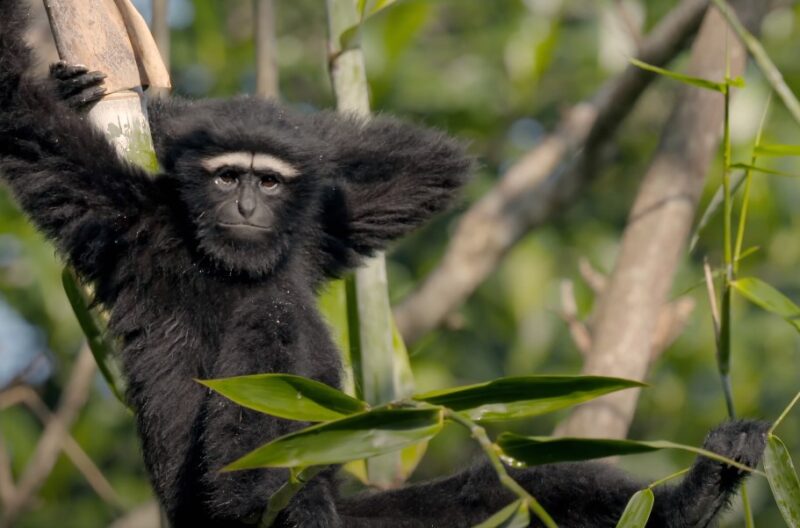
Gibbons, small apes found in the tropical forests of Southeast Asia, are well-known for their monogamous nature. These arboreal mammals form strong pair bonds, often lasting a lifetime.
What sets gibbons apart is their unique way of reinforcing these bonds – through song. Gibbon pairs perform loud, complex duets at dawn, which serve multiple purposes: strengthening their bond, marking their territory, and warding off potential intruders. These duets are a remarkable display of coordination and cooperation, reflecting the deep emotional connection between the pair.
- Gibbons are among the best acrobats of the animal kingdom; they can swing through the trees at speeds of up to 35 mph!
- There are about 20 different species of gibbons, and some can live up to 25-30 years in the wild.
7. Beavers
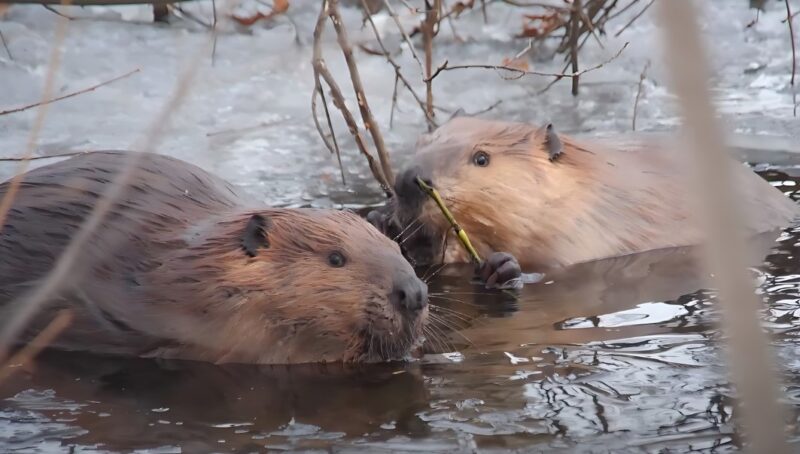
Beavers, known for their impressive dam-building skills, are another example of monogamous mammals. These large, semi-aquatic rodents form monogamous pairs that work together in raising their offspring and maintaining their lodges and dams.
The beaver family unit is a tight-knit group, with both parents involved in nurturing and teaching the young. This cooperative dynamic is crucial for the survival of the species, as the tasks of dam construction and maintenance require a high degree of coordination and effort.
- Beavers are incredible engineers; their dams can be up to 1,500 feet long in some cases.
- A beaver’s teeth never stop growing, which helps them manage the constant gnawing on wood.
6. Wolves
Wolves, often symbolized as icons of wildness and freedom, exhibit a complex social structure where monogamy plays a central role. In a wolf pack, the alpha male and female form a monogamous pair, leading the pack and being the sole breeders.
This pair bond is typically strong and enduring, with the alpha pair coordinating in hunting, pup-rearing, and making strategic decisions for the pack. The loyalty and cooperation displayed in these pair bonds are integral to the pack’s success and survival.
- Wolves have a special ‘nanny’ system, where younger pack members help take care of the pups.
- The size of a wolf pack can range significantly, typically from 6 to 15 members, though some packs can have over 30 members.
5. Prairie Voles
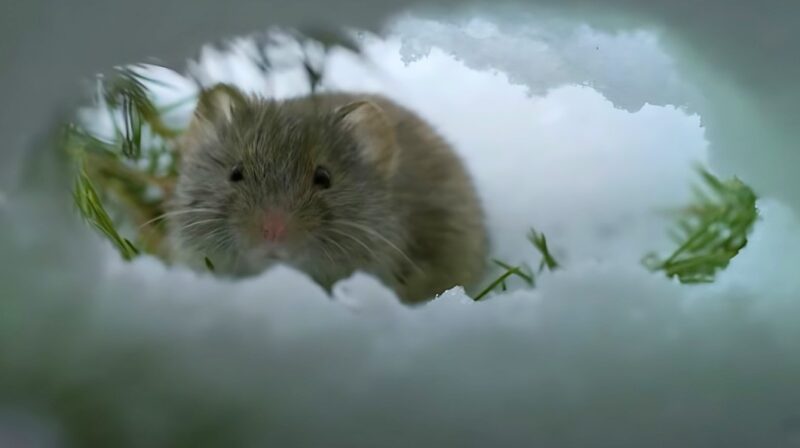
Prairie voles are small rodents native to North America, and they have become a model species for studying monogamous behavior in mammals. Unlike their close relative, the montane vole, prairie voles form long-lasting pair bonds and display a high degree of parental care.
Research on prairie voles has provided significant insights into the neurobiological and genetic basis of monogamy. The presence of certain hormones and receptors, such as oxytocin and vasopressin, plays a crucial role in the formation and maintenance of these pair bonds.
- Prairie voles are often used in scientific studies because their monogamous behavior is similar to humans in terms of brain chemistry.
- These voles can have up to 5-10 offspring per litter and can have several litters per year.
4. Kirk’s Dik-Dik
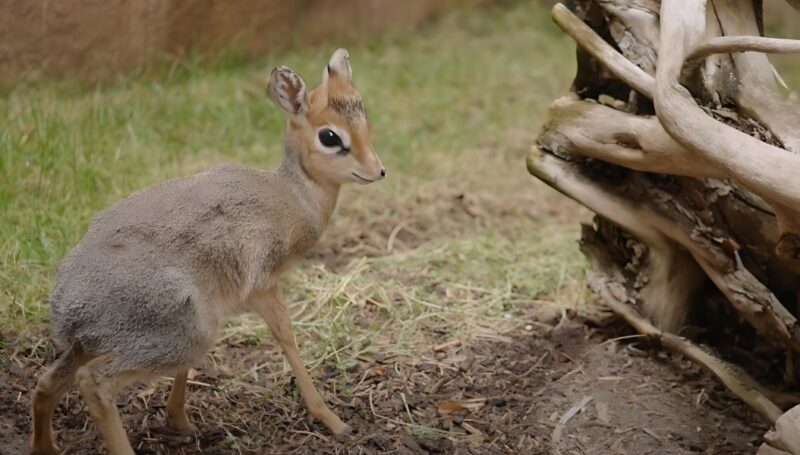
Kirk’s dik-dik, a small antelope species found in Eastern and Southwestern Africa, is notable for its monogamous behavior.
These shy and elusive animals form pairs that stay together for life. The dik-dik pair shares a territory, which they mark and defend together. The monogamous bond in dik-diks is characterized by subtle, yet deep, affection and cooperation, essential for survival in their often harsh and predator-filled habitats.
- Kirk’s Dik-Dik mark their territory with secretions from glands near their eyes, not just scent from their hooves.
- Dik-diks are tiny; they typically measure just 14-18 inches at the shoulder and weigh 7-16 pounds.
3. California Mouse
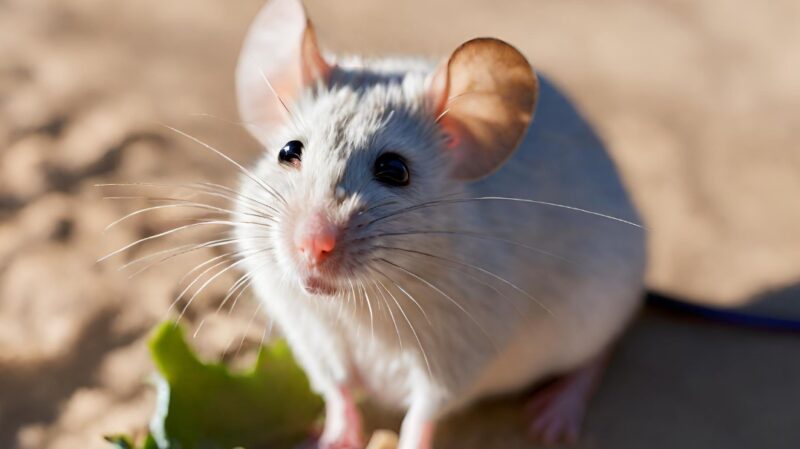
The California mouse is another example of a monogamous mammal. Native to the western United States, these mice are unique among their kind for forming lifelong pair bonds.
Both the male and female California mice are heavily involved in the upbringing of their offspring, a trait rare among rodents. Their monogamous nature is believed to be an adaptation to their environment, where the challenges of rearing offspring and defending territory are best met with a cooperative approach.
- The California mouse has a unique trait; it can vocalize in the ultrasonic range, which is inaudible to human ears.
- The home range of a California mouse pair can be quite large, up to 3,000 square meters.
2. Malagasy Giant Jumping Rat
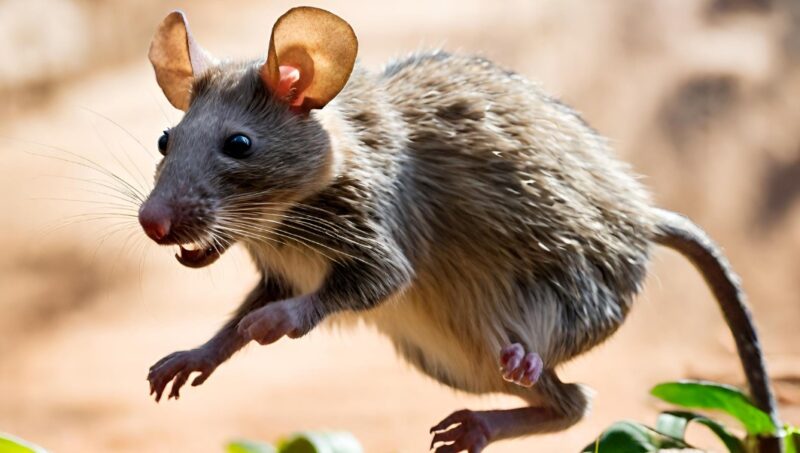
The Malagasy giant jumping rat, native to Madagascar, is a lesser-known example of monogamy in mammals. These nocturnal creatures, which resemble a cross between a rat and a kangaroo, form monogamous pairs that share burrows and jointly care for their young.
Their monogamous behavior is of particular interest to conservationists, as the species is endangered, primarily due to habitat loss. Understanding their social structure is crucial for developing effective conservation strategies.
- These rats can leap up to 3 feet in the air – a remarkable feat for their size!
- Unfortunately, it’s estimated that only about a few thousand Malagasy giant jumping rats remain in the wild.
1. Titi Monkeys
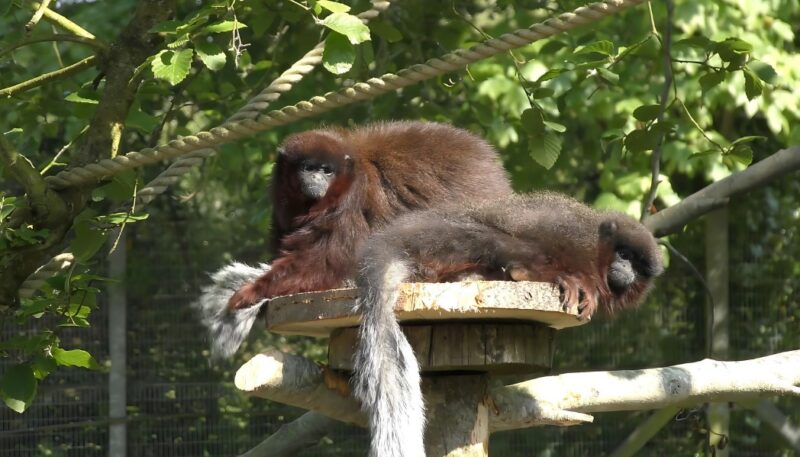
Titi monkeys, found in the forests of South America, are one of the few primate species known to be predominantly monogamous. These small monkeys form strong pair bonds, often seen with tails intertwined, a behavior thought to strengthen their bond.
Titi monkeys are also known for their elaborate vocalizations used to communicate with their mate and offspring, further exemplifying the complexity and depth of their monogamous relationships.
- When Titi monkeys mate, they often form an endearing behavior called ‘tail twining’, where their tails intertwine.
- Titi monkeys have a relatively small range; they occupy forest territories of about 10 hectares on average.
FAQs
Final Words
And there we have it – a journey through the love lives of some of nature’s most devoted couples. From the tree canopies to the forest floors, these monogamous mammals show us a different side of animal behavior, one that’s about partnership and lasting bonds. 🐒🦫
It’s a reminder that the animal kingdom is full of surprises and varied lifestyles. Thanks for joining in on this exploration. It’s always interesting to see the diverse ways nature navigates relationships. Until next time, keep an eye out for the simple yet profound connections in the wild! 🌿🐾💫








